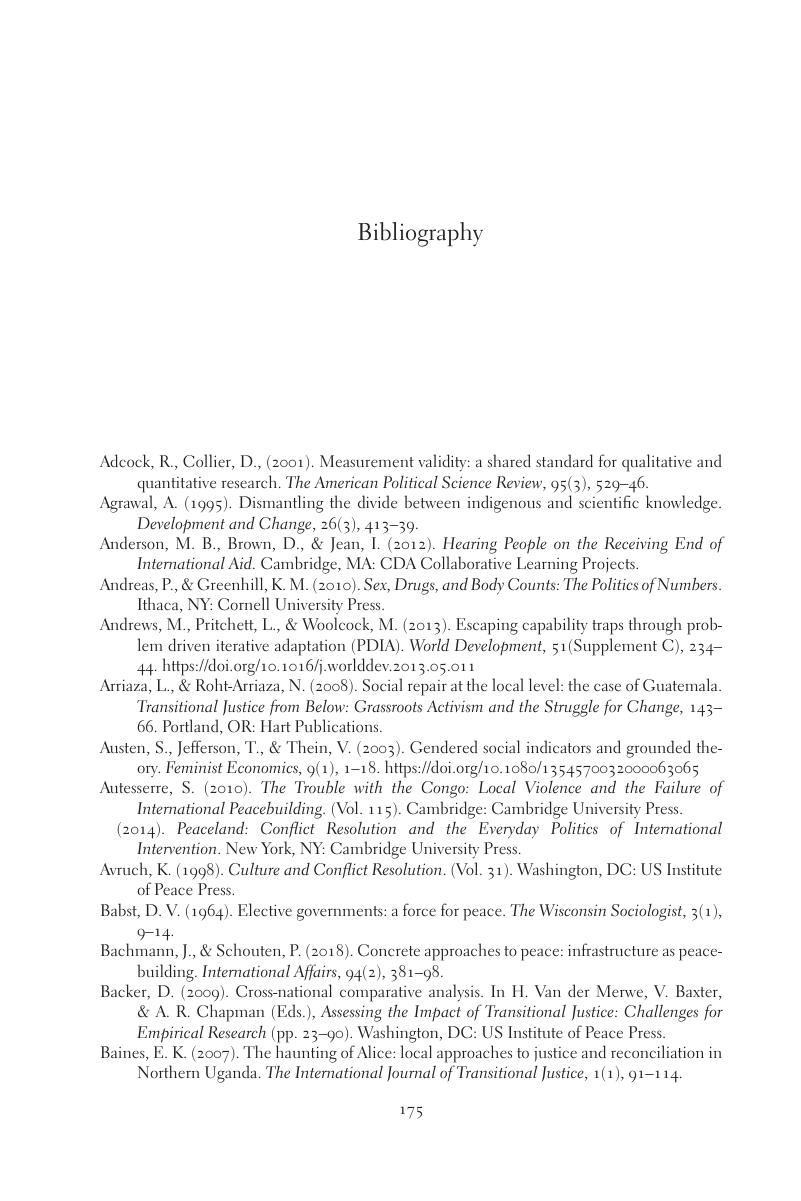Bibliography
Published online by Cambridge University Press: 21 September 2018
Summary

- Type
- Chapter
- Information
- Reclaiming Everyday PeaceLocal Voices in Measurement and Evaluation After War, pp. 175 - 186Publisher: Cambridge University PressPrint publication year: 2018



